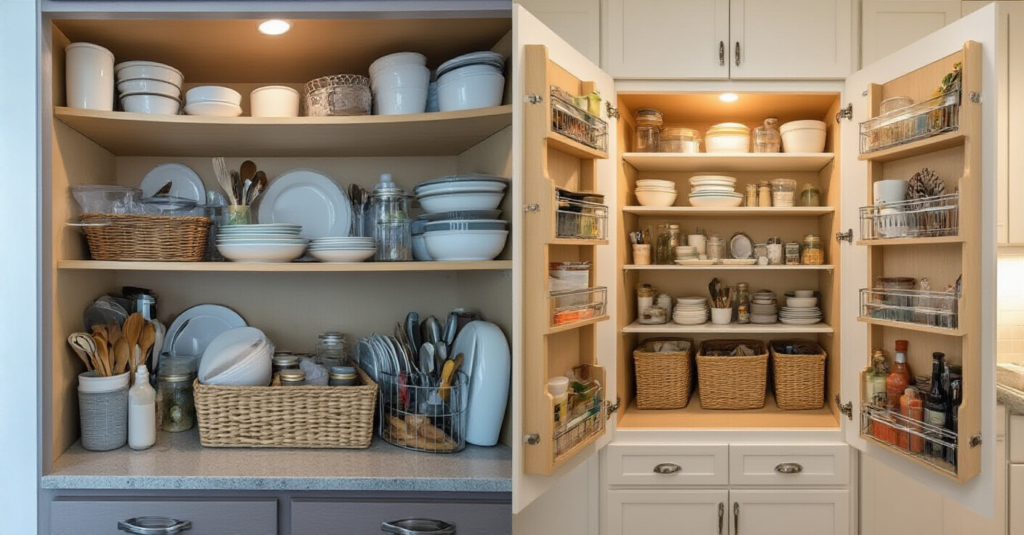Of course. It’s a perennial question, isn’t it? How to make one’s kitchen look effortlessly chic when it feels more like a jumble sale after a hurricane. People see these pristine photographs in magazines and assume it requires a fortune and a team of designers. It absolutely does not.
Here’s the thing everyone gets wrong: they think organisation is about buying more stuff—more bins, more boxes, more containers. It’s not. It’s about curation. It’s about editing your life down to what is essential and beautiful, and then finding a clever home for it.
I once worked with a lovely client in a glorious Georgian flat in Bath. The kitchen had impossibly high ceilings, beautiful sash windows, and… absolutely no practical storage. She’d spent a small fortune on beautiful copper pans but had them piled so precariously in a deep lower cabinet that she dreaded cooking. It was a classic case of a beautiful space fighting a modern life.
We didn’t rip it out. We simply made it work. And that’s the real secret: you don’t need a new kitchen. You just need a new way of thinking about the one you have. Forget the endless, sterile online galleries. Let’s talk about what actually makes a difference.
First Things First: Laying the Groundwork
Before you even think about buying a single charming little basket, we need to do the groundwork. This is the unglamorous part, I admit, but skimp on it, and you’ll simply be organising clutter, which is a fool’s errand. It’s like putting lipstick on a pig, as they say. A very tidy pig, perhaps, but a pig nonetheless.
1. The Great Kitchen Edit
First, you must conduct a purge. And I mean a ruthless one. Empty every single cabinet, one at a time, onto your dining table. This isn’t just about tidying; it’s about curating your culinary life. We’re not aiming for a sterile laboratory but a functional, joyful workshop. Pick up each item and ask yourself, in the spirit of the great William Morris, “Is it useful, or is it beautiful?” If the answer is no, it has no place in your home. That chipped mug you never use? Out. The melon baller you bought for one ill-fated dinner party in 2011? Out.
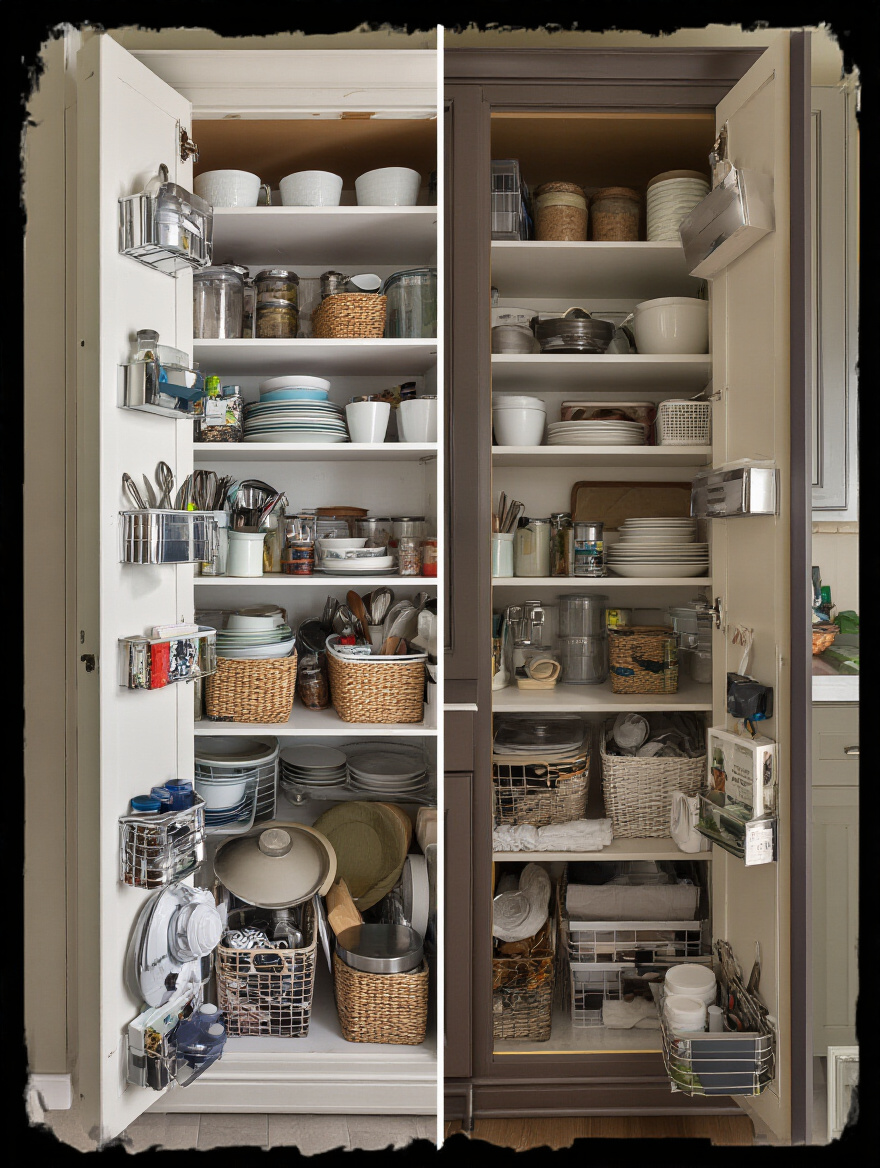
The biggest mistake people make is thinking they have a storage problem when they actually have a stuff problem. Don’t just shuffle things around. Get rid of them. You’ll be shocked by how much space you suddenly have. A client once discovered she owned five—five—identical lemon zesters. After our edit, her “overflowing” gadget drawer was half-empty and utterly serene. The shortcut here is to be merciless. If you hesitate, put it in a box. If you don’t retrieve it in a month, you have your answer.
Now that you’re left with only the essentials, we must ensure our new solutions will actually fit.
2. Measure Twice, Buy Once
This may seem painfully obvious, but I have seen more money wasted on this one simple misstep than any other. A client in Chelsea once ordered exquisite custom pull-out drawers for her pantry, only to find they wouldn’t clear the door hinge by a whisker. An expensive and soul-crushing mistake. Before you fall in love with an organiser online, you must measure your cabinet’s interior: width, depth, and height. And don’t just measure the middle. Measure at the front, middle, and back, as old cabinets are rarely perfectly square. Always use the smallest measurement.
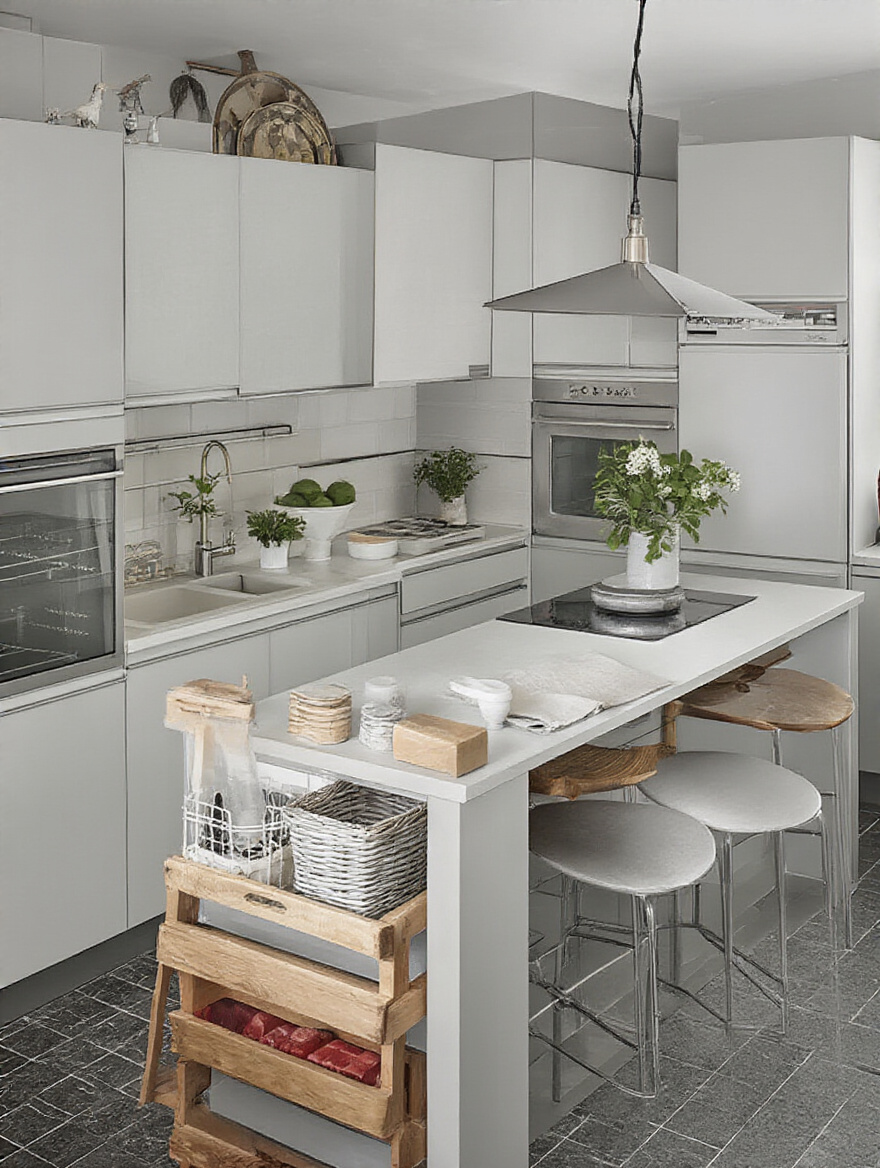
Note every single obstruction: hinges, pipes under the sink, the lip of the cabinet frame. These are the details that will foil your grand plans. The shortcut is simple but non-negotiable: write it all down. Keep a little notebook with the precise, usable dimensions of every cabinet. It takes ten minutes and will save you countless hours and the utter despair of return shipping.
With our curated collection and precise measurements, it’s time for a bit of logic.
3. Create Zones of Genius
Now you must categorise everything. It’s the foundational logic of any well-run house, from a grand country estate to a city flat. Think in terms of activity. All your tea, coffee, mugs, and sugar should live together in a “beverage station” near the kettle. Spices, oils, and cooking utensils belong near the hob. Baking ingredients and tins should be consolidated into a baking zone. This turns your kitchen from a random collection of cupboards into an intuitive workspace.
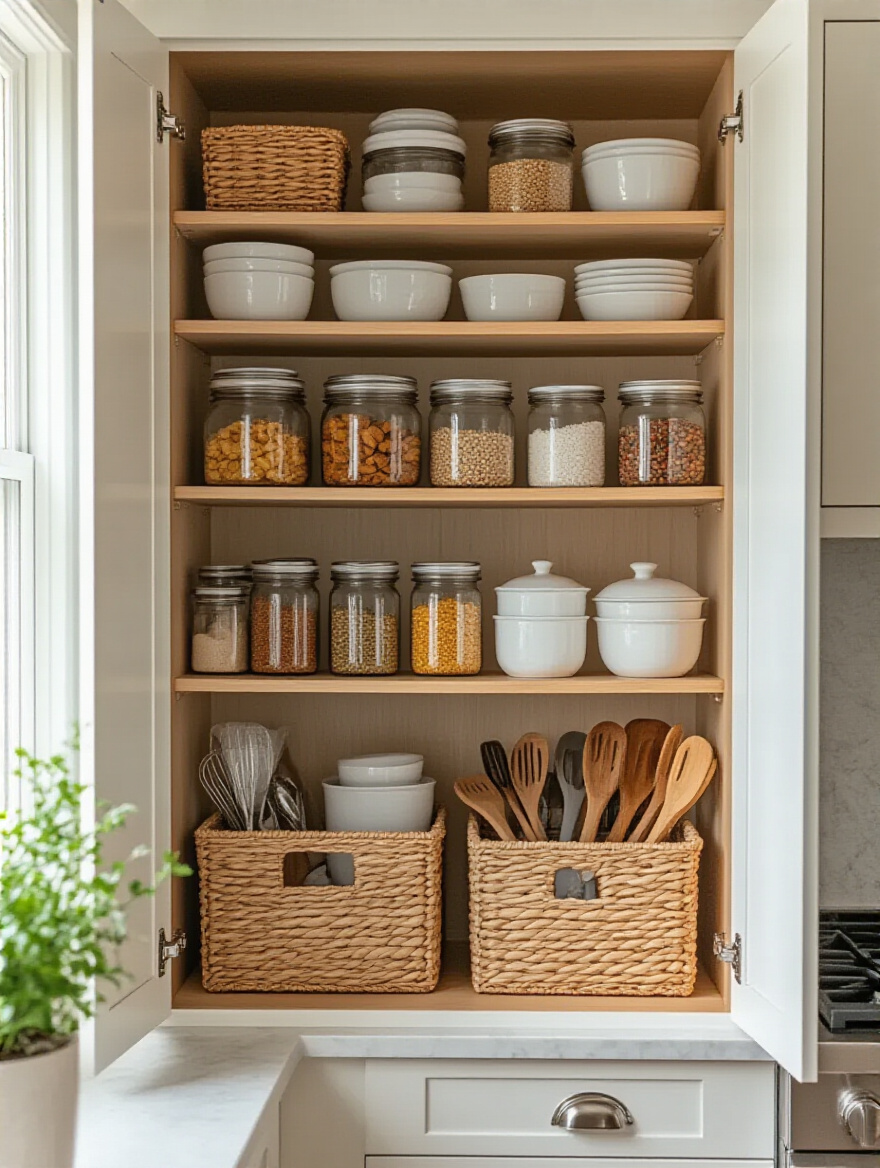
The noise here is getting caught up in impossibly tiny micro-categories. You don’t need a separate bin for “Italian herbs” and “French herbs.” Just “Herbs” will do. The goal is to reduce the number of steps you take to complete a task. I once helped a client who kept her coffee mugs on the opposite side of the kitchen from her coffee machine. By simply moving them, we saved her minutes every single morning. It’s about flow, not just tidiness.
Finally, before the fun begins, a dose of financial reality.
4. Mind the Gap… in Your Wallet
It’s terribly easy to get carried away. A beautiful pull-out rack here, a set of hand-woven baskets there, and suddenly you’ve spent the equivalent of a weekend in Paris. Before you purchase anything, set a realistic budget. Decide what your biggest “pain points” are and allocate funds there first. That deep corner cabinet that drives you mad? That’s where you should invest in a proper solution. The utensil drawer that’s merely a bit untidy? An inexpensive divider will do.
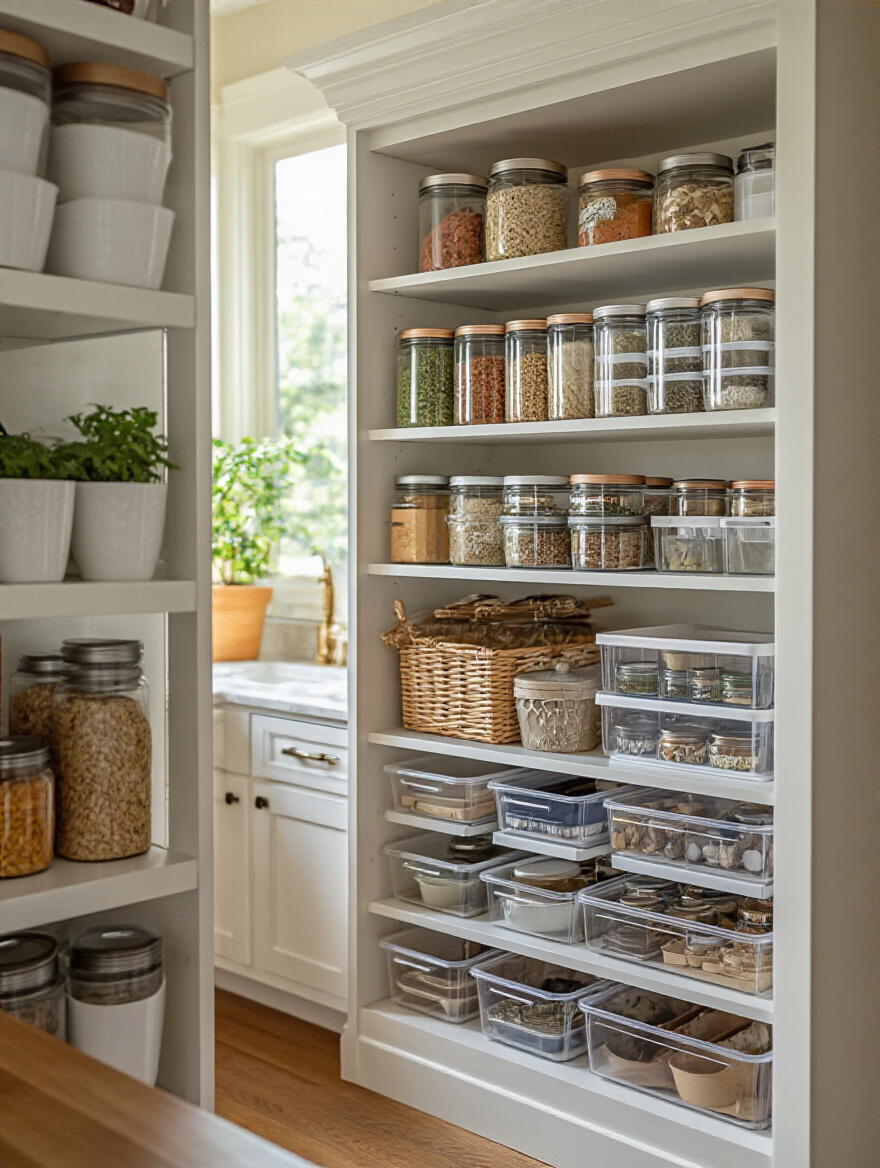
Don’t fall for the trap of thinking more expensive always means better. Some of the most effective solutions are wonderfully simple. The BS is the idea that you need a complete, matching “system” that costs a fortune. You don’t. You need smart, targeted solutions. I know people who’ve transformed their kitchens for under £100 with a few clever risers and racks, and others who’ve spent thousands and still live in chaos. Be strategic.
The Art of Using Every Last Inch
Now for the clever part. We’re going to make your existing cabinets work twice as hard by thinking in three dimensions. Most cabinets are a dreadful waste of vertical and horizontal space. We’re about to fix that.
5. Conquer the Deep, Dark Cabinet
Base cabinets are often deep, dark voids where Tupperware lids and old appliances go to die. Reaching for something at the back is a proper archaeological dig. The solution is pull-out shelving. It’s a complete game-changer. By installing shelves on glides, you bring the entire contents of the cabinet out into the light. Suddenly, everything is visible and accessible. No more kneeling on the cold floor, blindly rummaging for a pot lid.
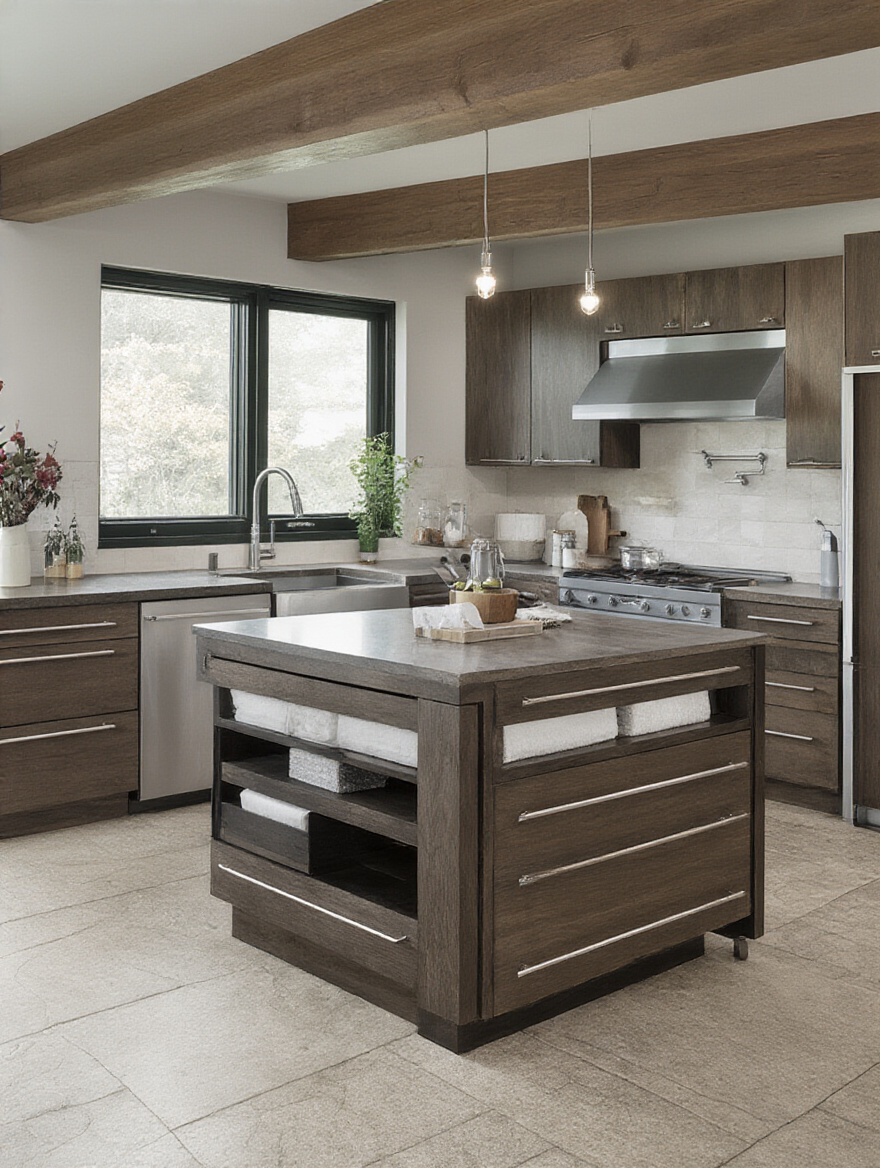
This isn’t just about neatness; it’s about ergonomics. For anyone with a bad back, they are not a luxury; they’re a necessity. The shortcut is to invest in good hardware. Flimsy glides that buckle under the weight of your cast-iron casserole are worse than useless. Get full-extension, soft-close glides with a high weight rating. They will utterly transform how you feel about your lower cabinets.
From the depths, we now look up.
6. Elevate Your Storage, Literally
Look inside a standard cabinet. See all that empty air above your mugs and bowls? It’s wasted space. Simple, expandable shelf risers are the answer. They essentially create a second level inside your cabinet, doubling your usable surface area. They’re perfect for plates and bowls, canned goods, or mugs. You can see everything at a glance without having to unstack a wobbly tower of china to get to the one plate you need.
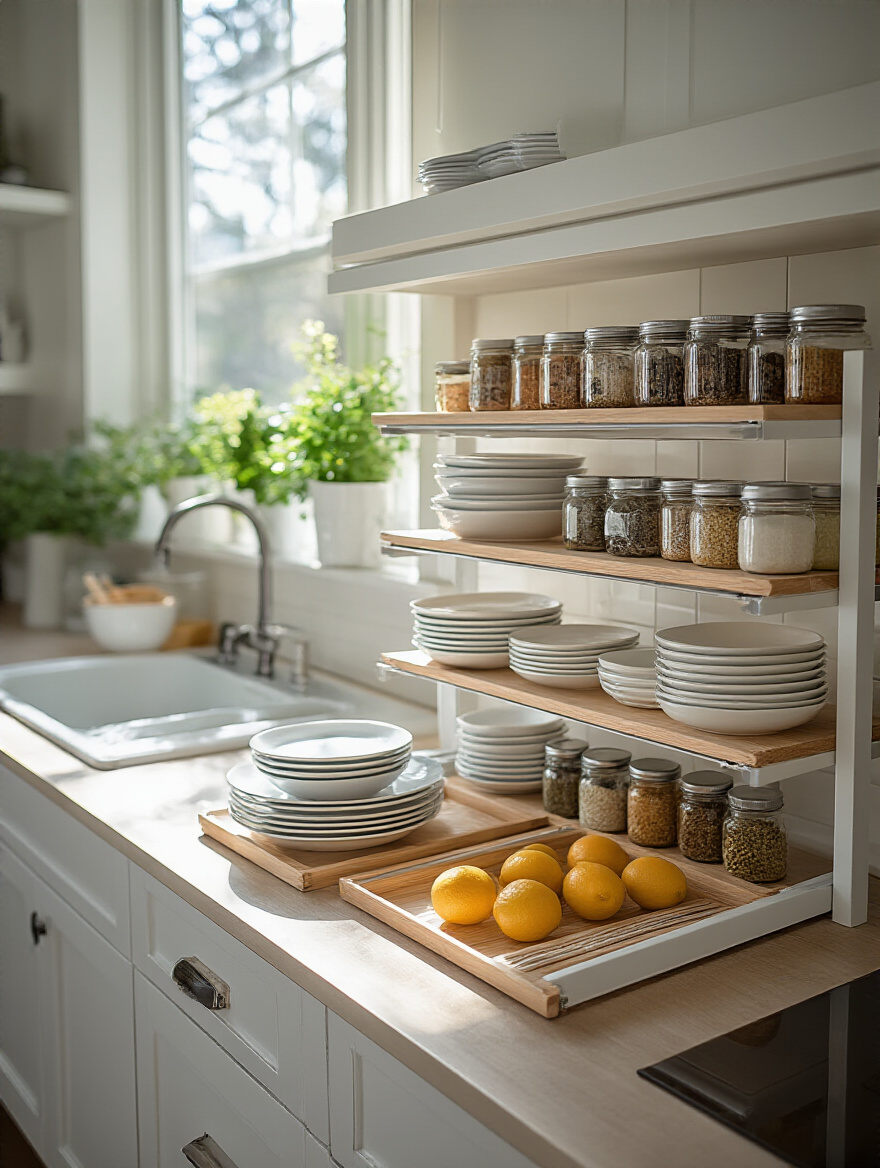
It’s such a simple fix, but the effect is profound. Your cabinets immediately look less crowded and far more organised. Don’t go for flimsy plastic. A sturdy metal or bamboo riser will last a lifetime and won’t buckle under the weight of your grandmother’s heirloom stoneware. Think of it as creating tiers, like a tiny ziggurat of tidiness.
Now for that jumbled drawer that jangles your nerves every time you open it.
7. Bring Order to the Utensil Anarchy
Ah, the utensil drawer. A chaotic battlefield of whisks tangling with spatulas in a never-ending war for dominance. Adjustable drawer dividers are the peacekeepers you desperately need. Instead of a single, jumbled pile, you create neat, logical channels for everything. Cooking utensils in one section, baking tools in another, cutlery in its rightful place. The satisfying silence of a drawer that doesn’t rattle is a small but profound joy.
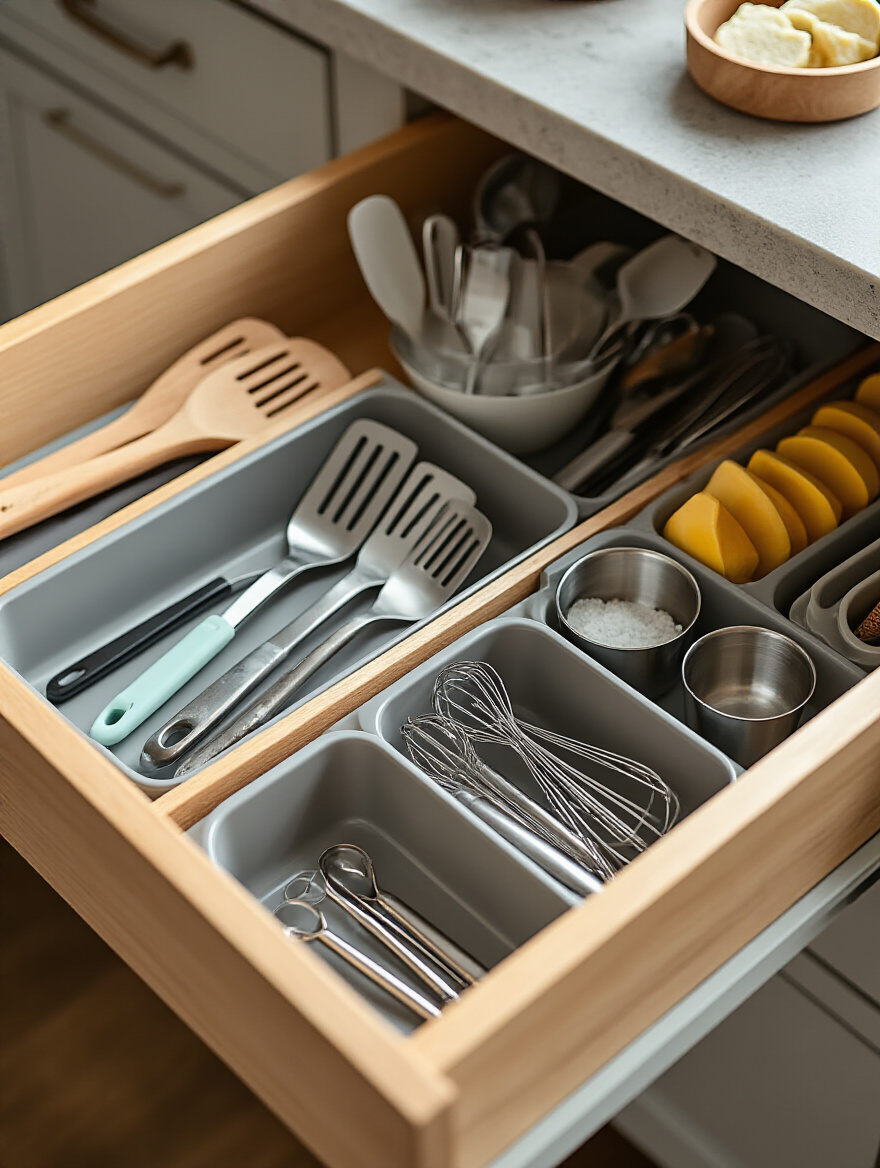
My advice is to choose spring-loaded dividers made of a handsome material like bamboo. They look smart, and you can adjust them to create custom-sized compartments for your specific tools. Forget those flimsy plastic trays where nothing ever quite fits. A few sturdy dividers are all you need to tame the beast and find your potato masher in under three seconds.
And speaking of noise, let’s address the loudest culprits in the kitchen.
8. End the Clatter of Pots and Pans
That dreadful clanging sound of searching for a pot lid at the bottom of a stack is enough to set one’s teeth on edge. Vertical organisers for pots and pans are the answer. Instead of stacking them, you store them on their sides, like files in a filing cabinet. Each pot and each lid becomes individually accessible. No more lifting three heavy pans to get to the one you need at the bottom.
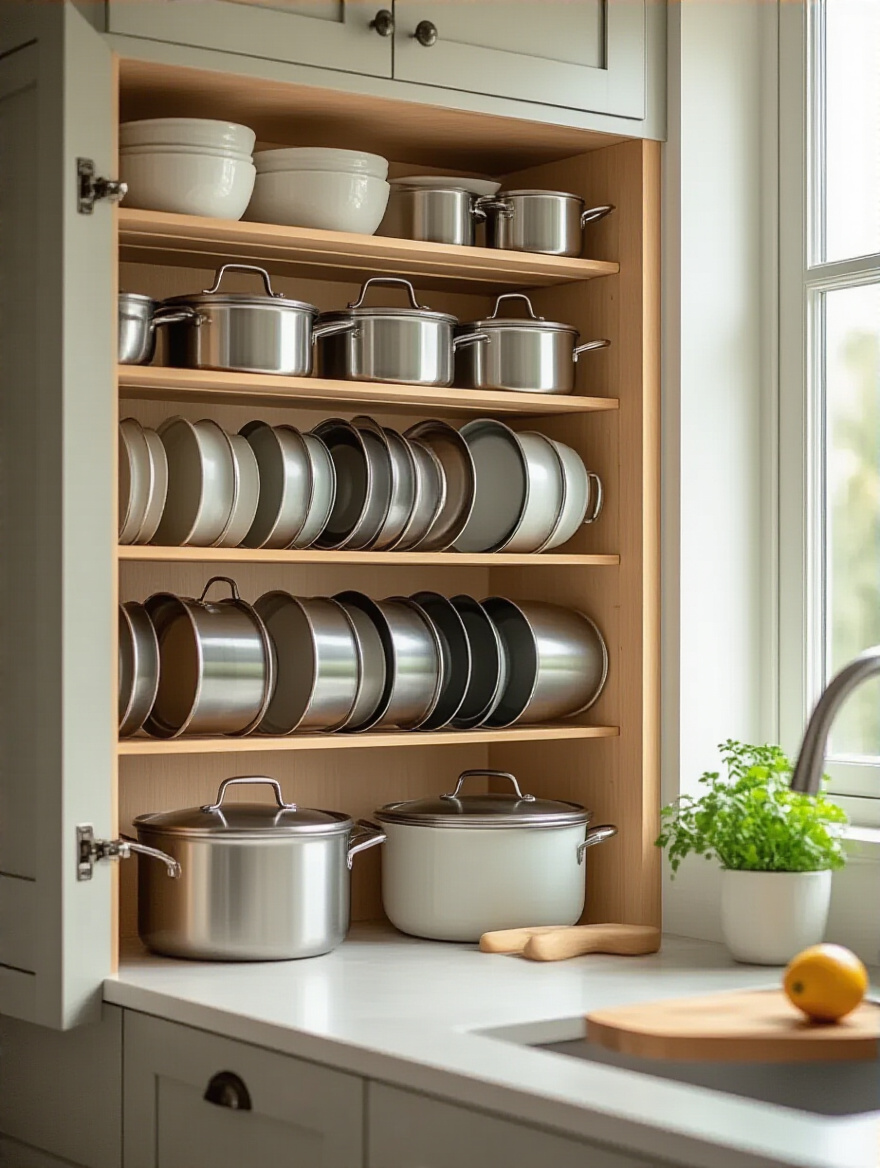
This not only saves your sanity but also protects your cookware. Stacking non-stick pans is a recipe for scratches and ruin. A simple, sturdy rack allows you to slide out exactly what you need, silently and efficiently. For lids, a separate rack—either in the same cabinet or mounted on the inside of the door—is a revelation.
Solving for Those Terribly Awkward Spaces
Every kitchen has them. The odd corner cabinet, the black hole under the sink. These are the spaces that confound us, but with a bit of ingenuity, they can become some of your most valuable storage real estate.
9. A Proper Home for Spices
There is nothing more frustrating than rummaging through dozens of little jars for the one sprig of thyme you need. A dedicated spice solution—be it a tiered riser in a cabinet, a clever drawer insert, or a pull-out rack next to the hob—is essential. The key is visibility. You should be able to see every single label without moving another jar. This stops you from buying a fourth jar of cumin you didn’t know you had.
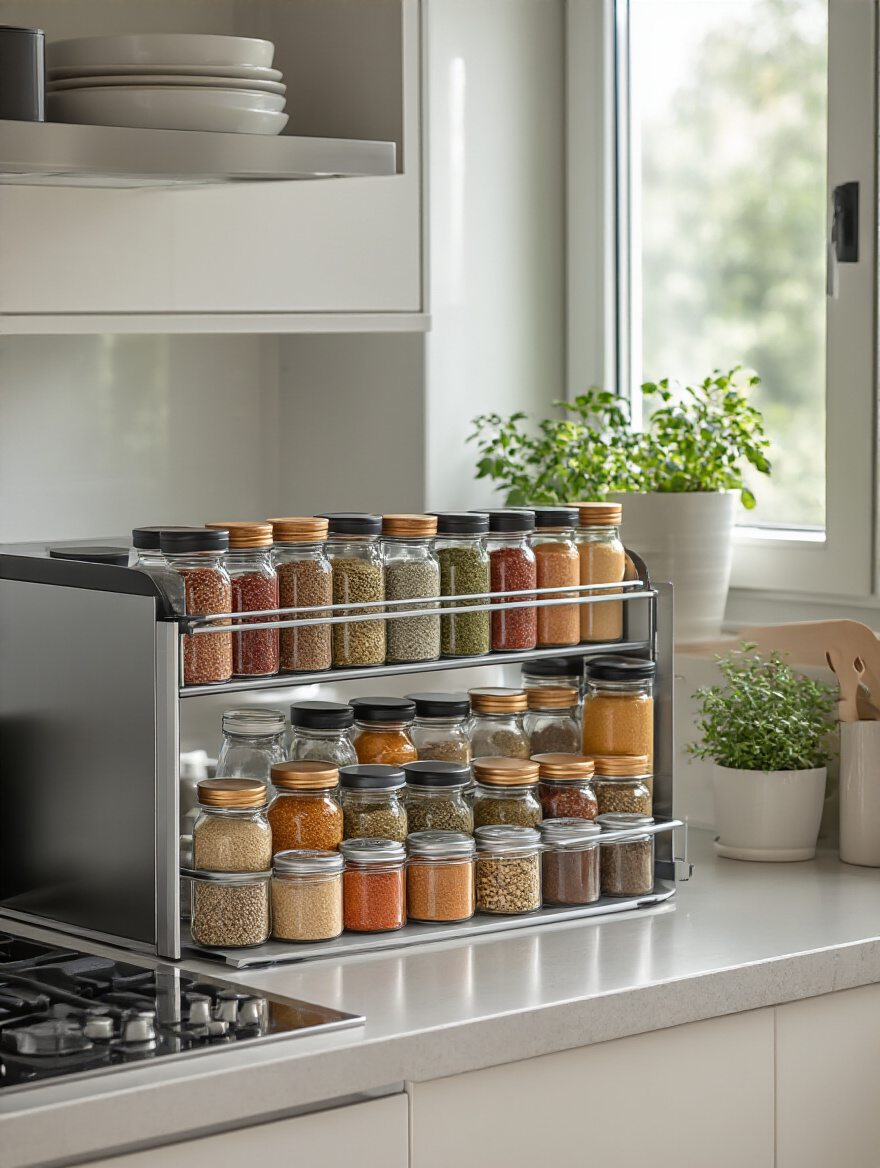
My personal preference is for a drawer insert. When you look down, you see every single label at once. It’s incredibly efficient. A shortcut to make any system work better? Decant your spices into uniform, labelled jars. It looks impossibly chic and immediately eliminates the visual clutter of mismatched branding. It’s a small effort for a huge aesthetic and practical reward.
Now for the space everyone dreads.
10. The Under-Sink Conundrum
The cabinet under the sink is a challenge: it’s dark, damp, and has to contend with a maze of plumbing. Most people just throw bottles of cleaner in there and hope for the best. This is where a dedicated under-sink pull-out organiser is worth its weight in gold. These are cleverly designed with two tiers and often a U-shape to fit neatly around the pipes.
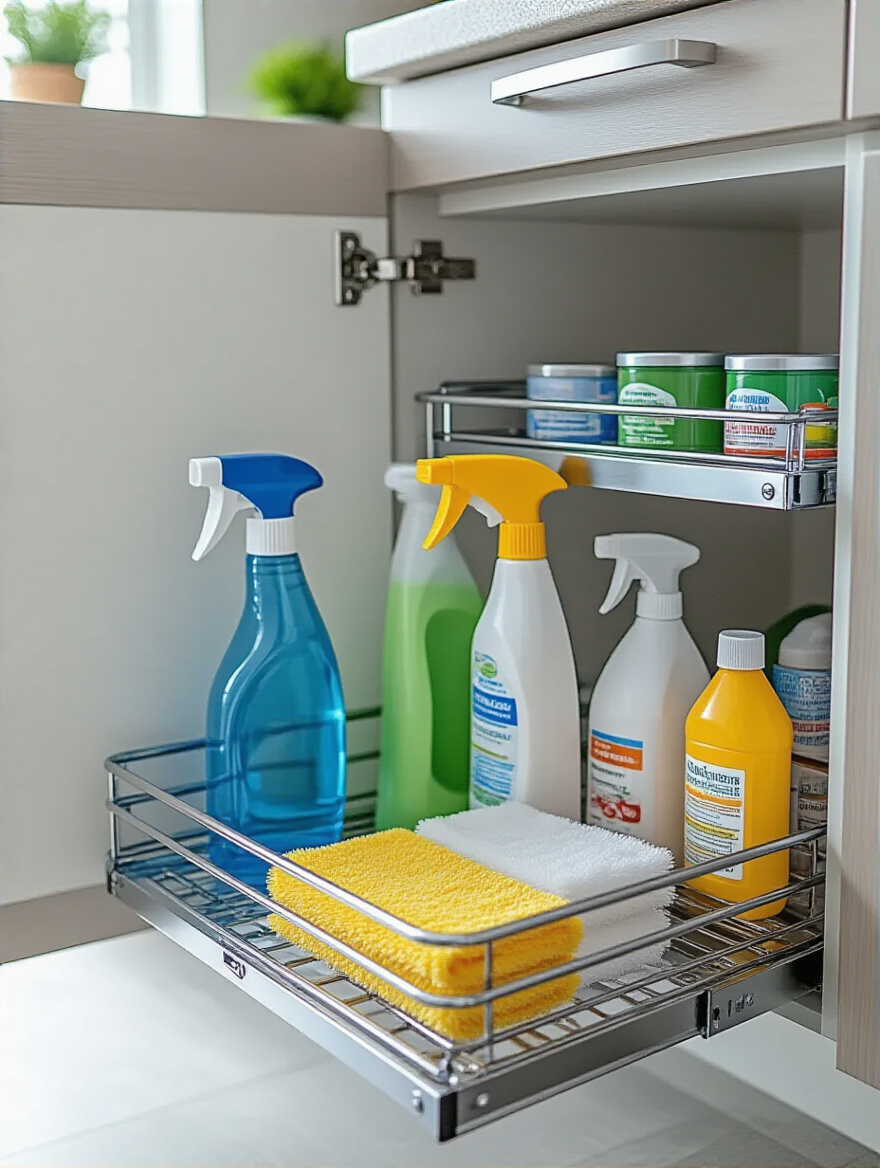
It brings all your cleaning supplies out into the open, so you can see at a glance what you have. It also contains any potential drips or spills on a wipeable surface, protecting the floor of your cabinet. By moving all those bottles off your countertop, you reclaim precious workspace and create a calmer, more unified look in your kitchen.
And its equally awkward cousin…
11. Taming the Corner Cabinet
The corner cabinet is the Bermuda Triangle of the kitchen. Things go in, but they rarely come out. The solution is as old as it is effective: the Lazy Susan. A multi-tiered rotating shelf transforms that deep, inaccessible void into a highly efficient storage carousel. With a simple spin, you can bring items from the back right to the front.

This is the perfect spot for small appliances, bulky dry goods, or even pots and pans. Be sure to get a sturdy model—a flimsy one will just become another source of frustration. And a little tip: place a non-slip liner on the shelves to stop items from sliding about as you spin it. It’s a simple fix for one of the kitchen’s most frustrating design flaws.
Don’t forget this overlooked slice of prime real estate.
12. Make Your Cabinet Doors Work for You
The inside of your cabinet doors is some of the most under-utilised space in the entire kitchen. It’s the perfect place to mount slim organisers for flat items. Think cutting boards, baking sheets, and even boxes of foil and cling film. Storing these items vertically, on a door, frees up an enormous amount of horizontal shelf or drawer space.
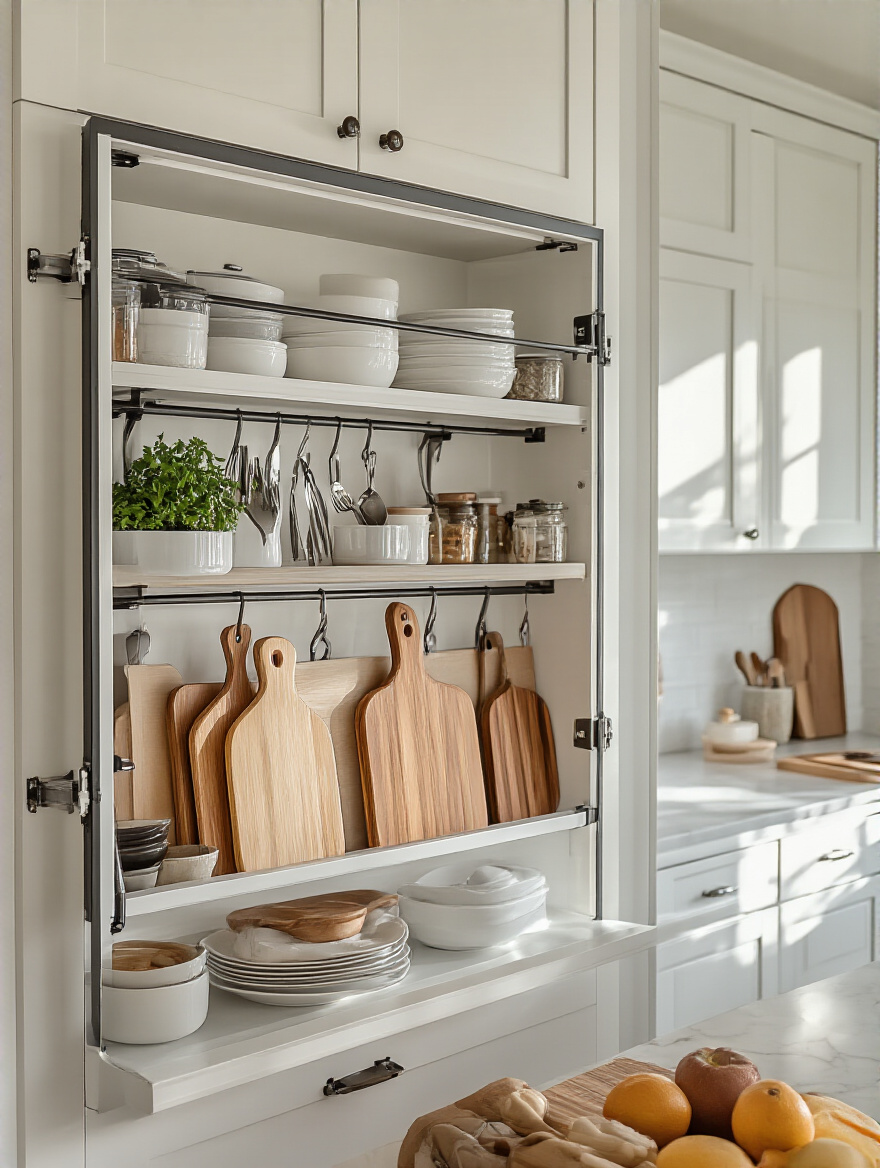
Imagine never having to unstack four baking sheets to get to the one at the bottom. A simple wire rack, screwed securely into the inside of a pantry or cabinet door, makes them all instantly visible and accessible. Just be sure to measure carefully so the door can still close without the rack’s contents hitting an internal shelf!
Specialised & Advanced Cabinet Enhancement Techniques
Once the basics are mastered, we can move on to the finer points—the clever enhancements that take a kitchen from simply organised to truly high-functioning. These are the details that make you feel like a genius every time you use them.
13. The See-Through Pantry
A deep pantry can feel like a blessing, but it often becomes a graveyard for expired tins and forgotten bags of pasta. Roll-out pantry organisers, which are essentially a series of deep drawers or baskets on glides, solve this problem completely. Instead of a static shelf where things get lost at the back, you can slide out the entire contents for a full inventory.

This is one of the single most impactful changes you can make to a kitchen. You’ll reduce food waste because you can see everything you have, and you’ll save money by not re-buying items you already own. When selecting these, always opt for full-extension glides. The ability to pull the shelf all the way out is what makes them so utterly transformative.
Let’s talk about the most dangerous drawer in the house.
14. A Safe Haven for Knives
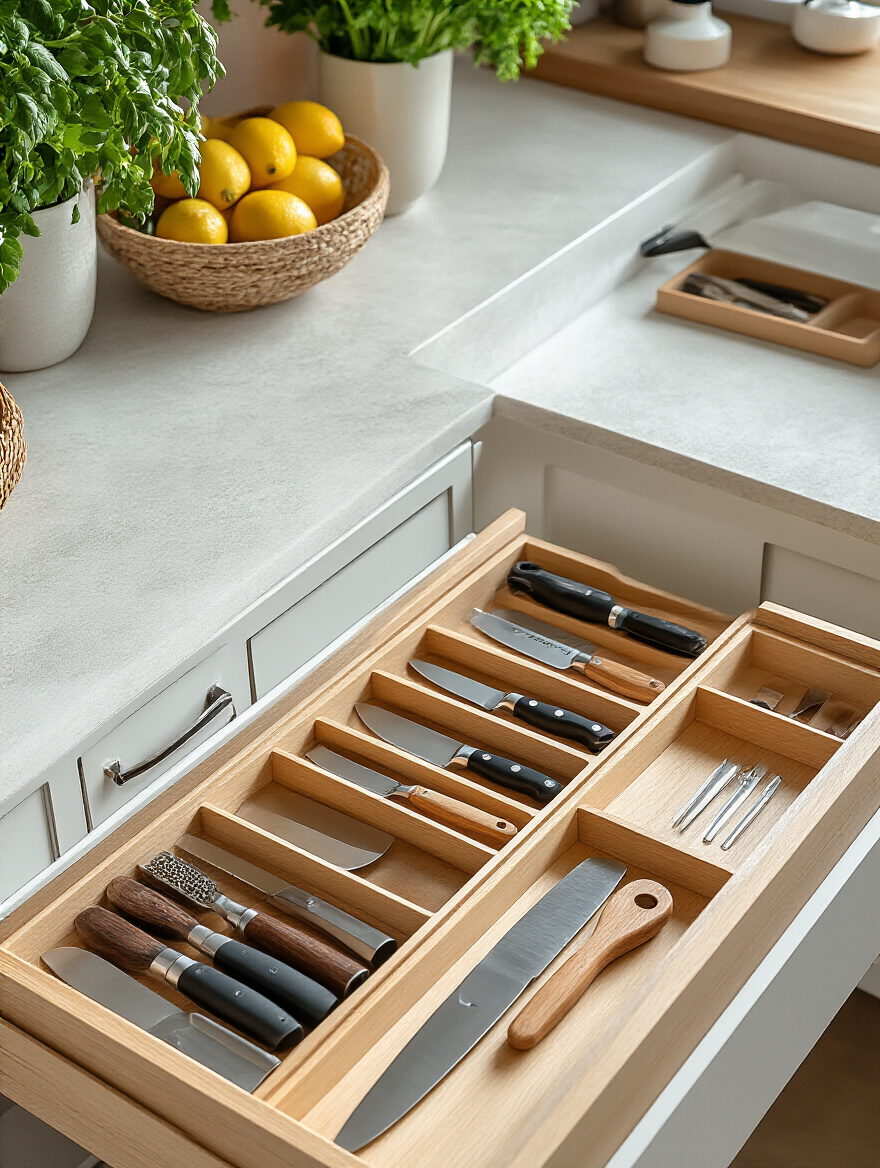
Throwing sharp knives loosely into a drawer is not only terribly bad for the blades, it’s a recipe for a trip to A&E. An in-drawer knife block or a custom insert is an elegant and essential solution. It keeps your knives organised, sharp, and, most importantly, safe. Each blade has its own slot, protecting both the steel and your fingers.
These inserts also create a wonderfully streamlined look. There are many ready-made options, or you can have one made bespoke for a truly tailored fit. The point is to give your most important tools the respect—and the safe home—they deserve. No more frantic rummaging for the paring knife.
Now for the little things that cause so much visual clutter.
15. A Place for Towels and Mitts
Dish towels draped over the oven handle or oven mitts cluttering the countertop create a sense of low-level, constant untidiness. The solution is ridiculously simple: hooks. A few small hooks mounted on the inside of a cabinet door—under the sink for a damp dish towel, near the oven for mitts—gets them out of sight but keeps them within easy reach.

For the dish towel, this also allows it to dry more hygienically than when it’s folded or bunched up. It’s a tiny detail that makes a surprisingly big difference to the overall sense of calm and order in your kitchen. Choose simple, elegant hooks that match your other hardware for a cohesive look.
Let’s tidy up those flimsy boxes once and for all.
16. The End of Boxy Clutter
Boxes of cling film, foil, and food storage bags are awkward, ugly, and always seem to be jamming a drawer. A wall-mounted dispenser, placed on the inside of a pantry door, is a brilliantly tidy solution. It neatly contains the rolls and often has a built-in cutter, which is far superior to the temperamental serrated edge on the box.
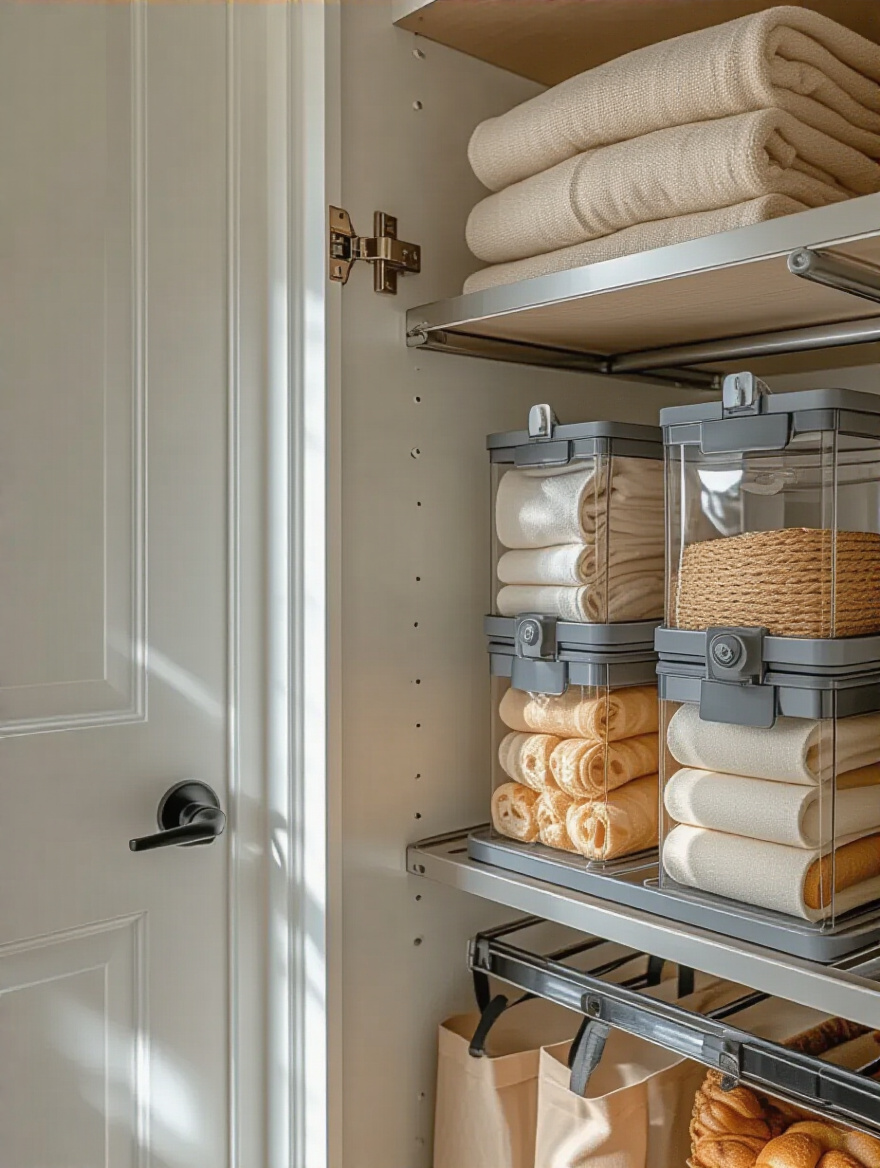
This simple move can free up an entire drawer for other things. It’s one of those “why didn’t I do this years ago?” fixes. By putting these everyday items in a dedicated, off-shelf home, you streamline your workflow and banish that cascade of falling boxes every time you open the cupboard.
Maintaining Your Newly Serene kitchen
Now, my dear, comes the most important part. Achieving this state of organised bliss is one thing; maintaining it is another. Organisation is not a project; it’s a practice. These are the habits that will keep your kitchen from descending back into chaos.
17. The Protective Power of Liners
After all this hard work, the last thing you want is for your beautiful cabinets to be scratched and stained. Non-slip cabinet liners are a must. They protect the surface of your shelves from scuffs from pots and pans and make cleaning up spills an absolute doddle. Simply lift the liner out, wipe it down, and you’re done.
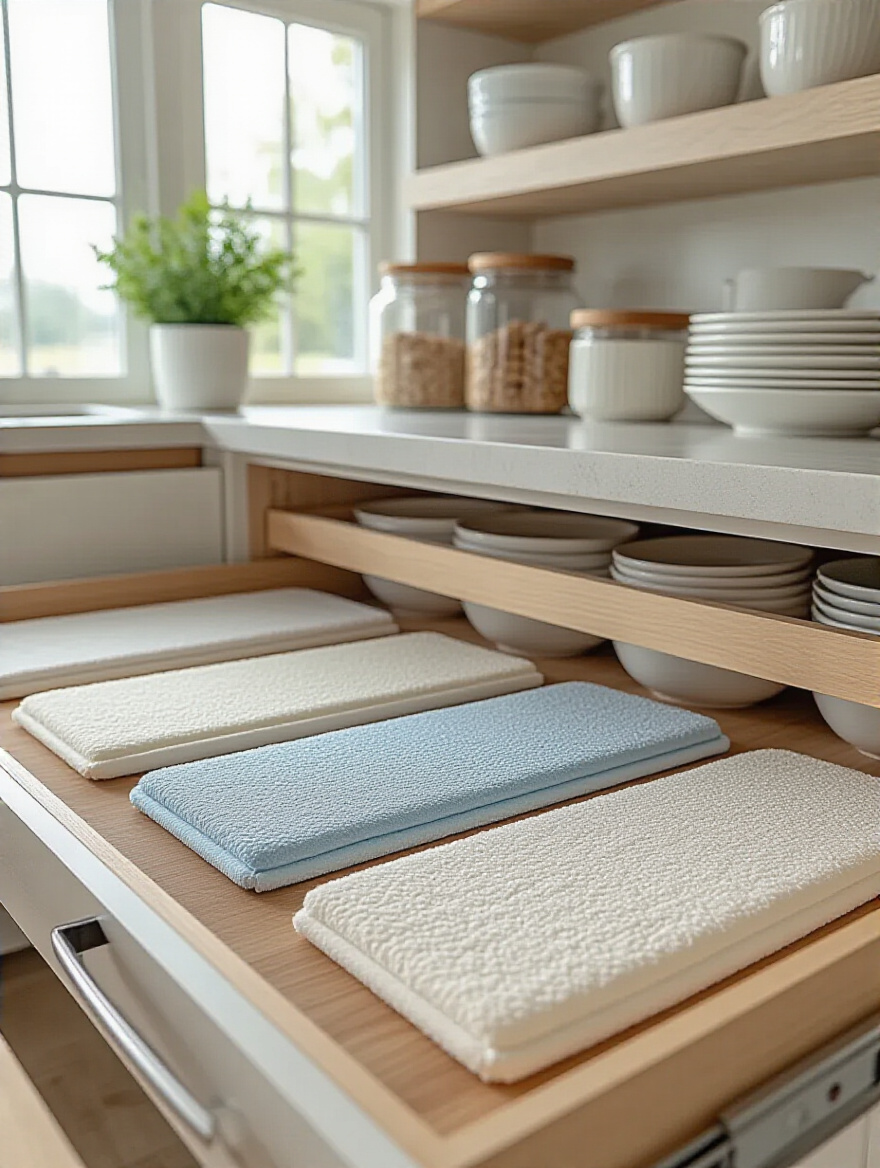
But their real genius is in their non-slip quality. They stop your neatly arranged glasses and bowls from sliding about every time you open a drawer or cabinet. This subtle stability makes everything feel more secure and ordered. It also quiets the kitchen, reducing that clanking and clattering that adds to a sense of chaos.
You’ve done the work, now make it stick.
18. The Gentle Art of Labeling
You may think you’ll remember what’s in every opaque bin, but trust me, you won’t. And no one else in your household will have a clue. Labeling is the final, crucial step that makes a system permanent. Whether it’s an elegant label maker, a chic chalk pen, or a simple paper tag, you must identify the contents of every container.

This simple act transforms your storage from a mystery into an open book. It ensures that things are not only easy to find but, crucially, easy to put away in the correct place. The BS is that labels make a space look cluttered. On the contrary, when done consistently and beautifully, they bring a sense of intention and order that is deeply calming.
This next one is a golden rule for life, not just for kitchens.
19. The ‘One-In, One-Out’ Policy
Clutter happens because more things come into our homes than leave them. The “One-In, One-Out” rule is your defence against this slow creep. Every time you bring a new kitchen item home—a new mug, a new gadget, a new serving bowl—an old one must leave. It forces you to be a mindful consumer. Do you love this new mug enough to get rid of one of your existing ones?
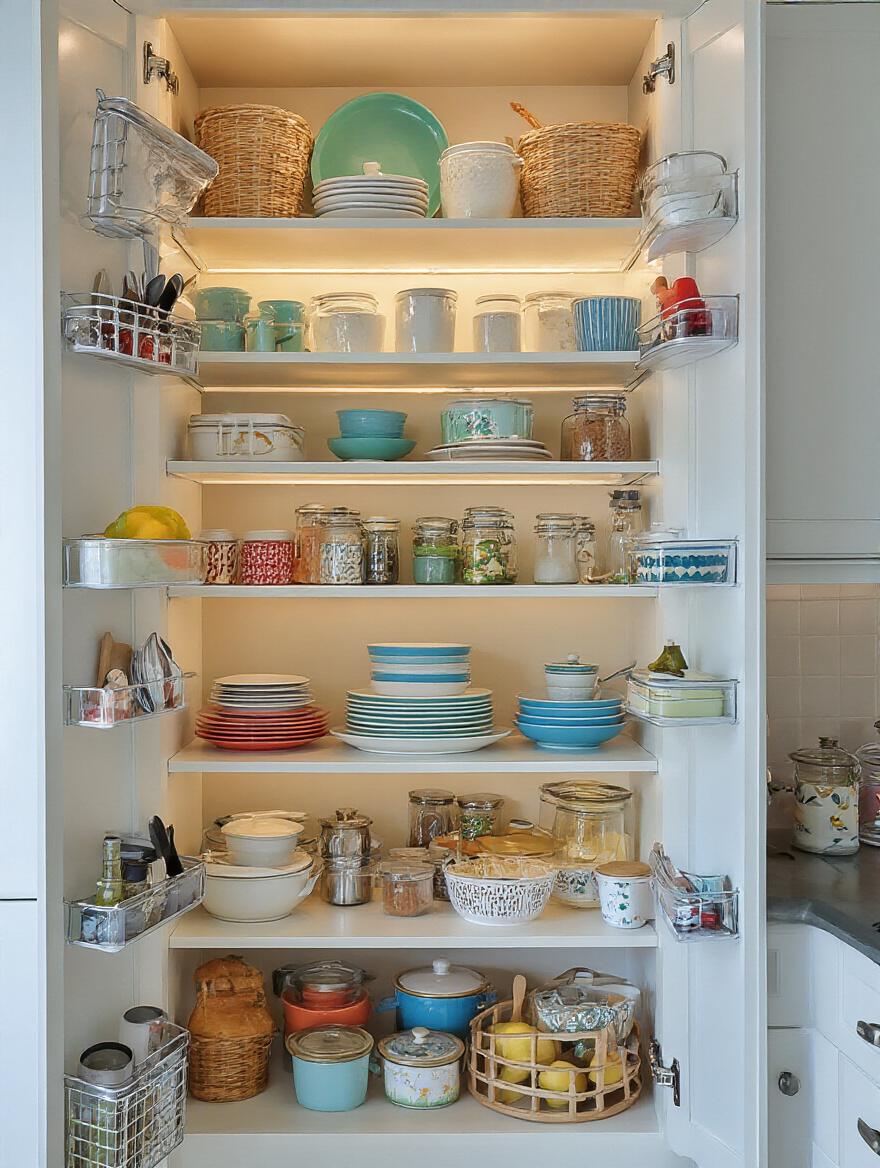
This simple policy is the most powerful tool you have for maintaining equilibrium. It stops accumulation in its tracks. You’re not constantly decluttering; you’re simply living in a state of curated balance. It requires discipline, but it’s the secret to lasting organisation.
And finally, a little ritual to keep things in order.
20. The Seasonal Check-In
Even with the best of intentions, things can go slightly awry. That’s why a scheduled quarterly check-in is so vital. Set a reminder in your calendar at the start of each season to spend just 30 minutes refreshing your system. Quickly wipe down the shelves, check for expired food in the pantry, and put back anything that has migrated to the wrong spot.
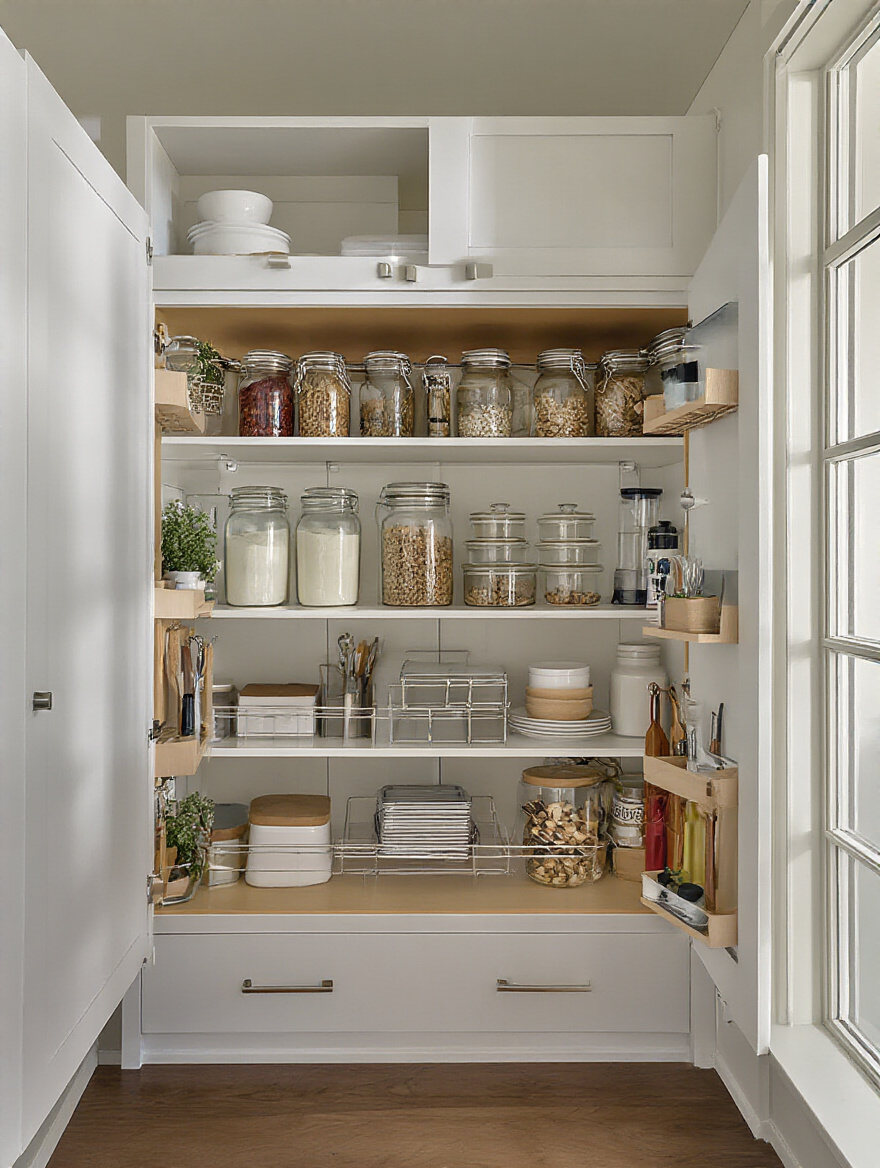
This isn’t a deep clean or a massive purge. It’s a quick, low-effort tune-up that stops small problems from becoming big ones. It ensures your kitchen continues to work for you and adapts as your needs change. This little habit prevents you from ever having to do a massive, soul-destroying re-organisation again.
Conclusion
There you have it. Transforming your kitchen isn’t about some unattainable ideal you see in a design journal. It’s about a series of small, intelligent choices that add up to a profound change in how you live. It’s about creating a space that serves you, that brings you calm instead of stress, and that makes the daily ritual of cooking a genuine pleasure.
The journey starts not with a shopping trip, but with a simple act of editing. By thoughtfully implementing these strategies—from purging what you don’t need to finding a clever home for what you do—you reclaim your kitchen. You make it a true heart of the home, not just a holding pen for clutter. So take the first step today. Your serene, beautifully functional kitchen awaits. And I promise, your future self will thank you for it.
